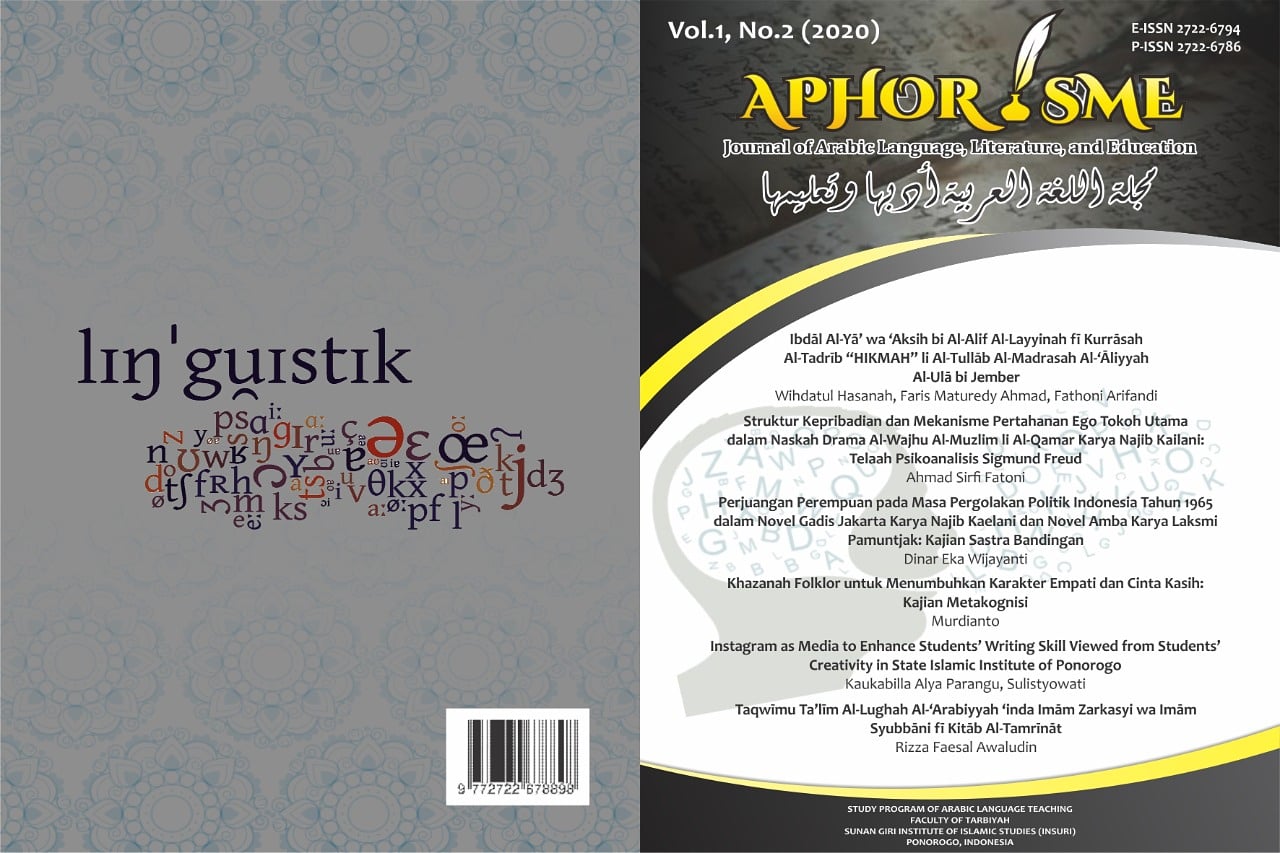Instagram as Media to Enhance Students’ Writing Skill Viewed from Students’ Creativity in State Islamic Institute of Ponorogo
DOI:
https://doi.org/10.37680/aphorisme.v1i2.451Keywords:
Keywords: Instagram, Social Media, Writing Skill, Islamic StudentsAbstract
Utilizing Instagram as media in teaching English is a new phenomenon in Education. Naturally, Instagram is a social media that usually used for sharing pictures and videos which is mostly used by the youths. However, it is such a good chance to use something the students are excited about for educational purpose. This research aims to identify whether: 1) Instagram can improve the students’ writing skill; (2) there is an interaction between teaching media and students’ creativity in teaching writing. This research is classified as quasi-experimental study and the subjects of the research were 36 students of Shariah Economics in Economics Faculty in State Islamic Institute of Ponorogo. The data obtained during the research are in qualitative and quantitative forms. The data were acquired by using two instruments; questionnaire and writing test. Questionnaire was used to categorize both students having high or low creativity, and writing test was used to measure their writing skill. The data were, then, analyzed by using Multifactor Analysis of Variance ANOVA and Tukey test. Before conducting the ANOVA, pre-requisite tests such as normality and homogeneity test were conducted. This study finds that: (1) Instagram media is more effective than Powerpoint media to teach writing; (2) There is an interaction between teaching media and students’ creativity in teaching writing. The result of this study implies that Instagram media is an effective media in teaching writing to the second semester students.
References
Arikunto, S. 2002. Metodologi Penelitian Suatu pendekatan Proposal. Jakarta: PT> Rineka Cipta.
Ary, D., Jacobs, L. C., & Razavieh, A. (2010). Introduction to Research in Education. Belmont, CA: Wadsworth/Thomson Learning.
Burke, Johnson & Christensen Larry, 2000. Educational Research Quantitative and Qualitative approaches. Boston: Allyn & bacon.
Handayani, Fitri. (2016). “Instagram as a teaching tool? Really?” Proceedings of the Fourth International Seminar on English Language and Teaching (ISELT-4) Universitas Mahaputra Muhammad Yamin Solok.
Nugrahaeni, Dina Septi. (2019). “The Effectiveness of using Instagram to Teach Writing at MAN Salatiga in the academic year 2019/2020), IAIN Salatiga.
Nunan, David. 2003: Practical English Language Teaching. Singapore: Mc Graw Hill.
Purwandari, M. (2017). THE USE OF PHOTOGRAPHS ON INSTAGRAM IN TEACHING DESCRIPTIVE TEXT TO IMPROVE STUDENTS’ WRIITNG SKILL. ELT forum: Journal of English language Teaching. 6(2). 133-141
Downloads
Published
Issue
Section
License
Authors who publish with this journal agree to the following terms:
Authors retain copyright and grant the journal right of first publication with the work simultaneously licensed under a Creative Commons Attribution-NonCommercial 4.0 International License that allows others to share the work with an acknowledgement of the work's authorship and initial publication in this journal.
Authors are able to enter into separate, additional contractual arrangements for the non-exclusive distribution of the journal's published version of the work (e.g., post it to an institutional repository or publish it in a book), with an acknowledgement of its initial publication in this journal.
Authors are permitted and encouraged to post their work online (e.g., in institutional repositories or on their website) prior to and during the submission process, as it can lead to productive exchanges, as well as earlier and greater citation of published work.





.jpg)


1.jpg)
